Streams are a wonderful resource to have on your property because of all the gifts water brings to life. Among many things, it can provide water for livestock or a place to carry a cane pole and a can of red worms for a relaxing summer evening.
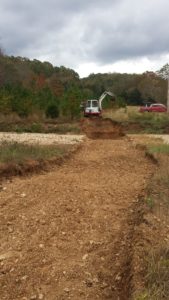 Streams can be a real challenge at times especially when we decide we need to create a spot to get our vehicles or equipment to the other side. Slippery or loose banks and soggy soft bottoms like to swallow up even the rough tread tires we throw at it. Then, just when you’ve figured out the best track or things settled in, the floodwaters come. Even the banks of a wet weather creek can start to have a mind of its own causing trouble.
Streams can be a real challenge at times especially when we decide we need to create a spot to get our vehicles or equipment to the other side. Slippery or loose banks and soggy soft bottoms like to swallow up even the rough tread tires we throw at it. Then, just when you’ve figured out the best track or things settled in, the floodwaters come. Even the banks of a wet weather creek can start to have a mind of its own causing trouble.
Of course we say “its causing trouble” but often we instigate it, and it ends up costing us. Every time you take a machine out to move soil and gravel around so you can get across, it digs in your wallet and soil loss and water quality are the two losses that are harder to measure.
Hardened stream crossings are a way to bring a little more stability to your stream bank and stream bed where you cross. The intent is also to bring a little more stability to your maintenance costs while reducing environmental problems for you and your neighbor.
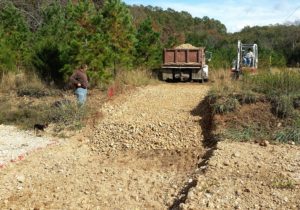
I was on a project today where we hardened a stream crossing in a wet weather or intermittent stream (flows water during rainy season or when it floods). This stream continually poses new problems every high water event. The whole idea of a hardened stream crossing is to replace the rounded, sandy, and loose gravel in the streambed and approaches on either side with much larger and consistent quarry rock. Quarry rock has a lot of angular and jagged edges that when placed down and packed, locks together much better and will stay in place.
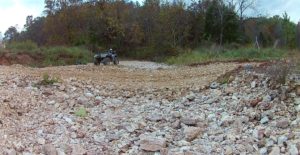
The key to doing this with the least impact is essentially to hide the crossing from the force of floodwaters, keeping a low profile. The best way to do this is to keep your crossing surface at grade (or flat across) with the stream bed. Doing our best to disturb as little as possible during the construction, we excavated and removed the material from the streambed below grade and filled and packed new material back to grade. It looks simple enough, but there is a bit of engineering involved to determine the correct location and design for the project.
The expectation is for this crossing to bring consistent usable service for years to come, and minimize and reduce its soil and water quality impact.
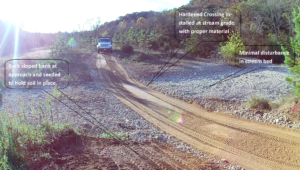
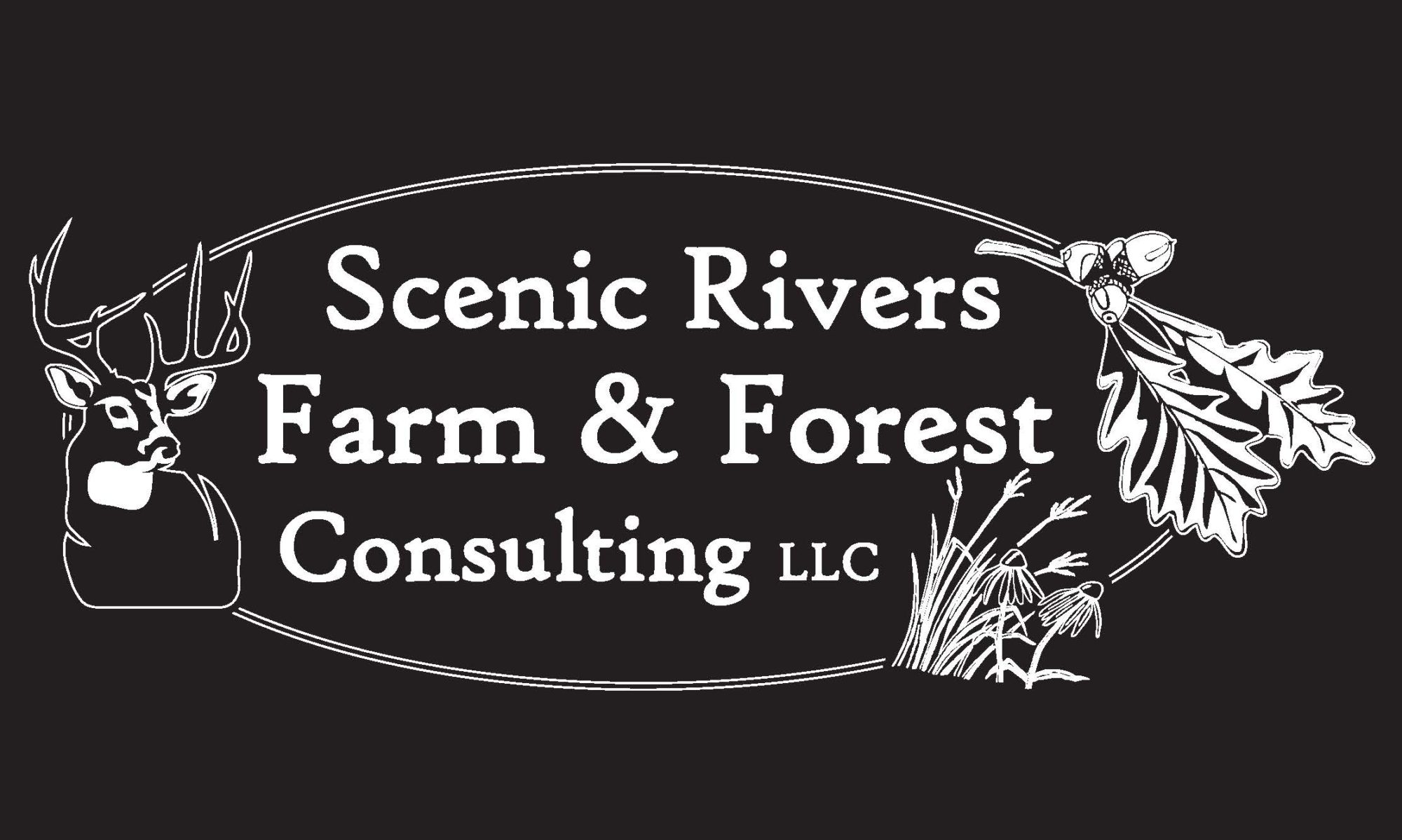
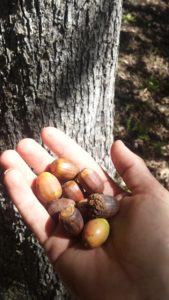 In central Howell County the other day, I noticed the beginnings of fresh white oak acorns hitting the ground. This is an important event because white oak acorns are among the favored of forest foods for many. White oak acorns are preferred over many of the others because they have less tannins. Tannin is a chemical compound that is both an astringent and also binds and reacts with proteins making them unusable to many animals. If you’ve ever eaten a persimmon that wasn’t quite ripe, you’ve experienced the effect of tannins, The astringency makes your mouth pucker and the tannins bind with the proteins in your mouth and make it feel gritty or like sandpaper. Not a fun experience! Tannins have a bitter flavor. Since white oak acorns are low in tannins, to animals, they simply tastes better than other acorns.
In central Howell County the other day, I noticed the beginnings of fresh white oak acorns hitting the ground. This is an important event because white oak acorns are among the favored of forest foods for many. White oak acorns are preferred over many of the others because they have less tannins. Tannin is a chemical compound that is both an astringent and also binds and reacts with proteins making them unusable to many animals. If you’ve ever eaten a persimmon that wasn’t quite ripe, you’ve experienced the effect of tannins, The astringency makes your mouth pucker and the tannins bind with the proteins in your mouth and make it feel gritty or like sandpaper. Not a fun experience! Tannins have a bitter flavor. Since white oak acorns are low in tannins, to animals, they simply tastes better than other acorns.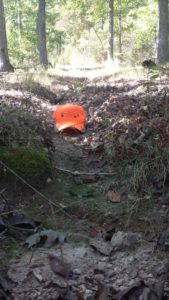
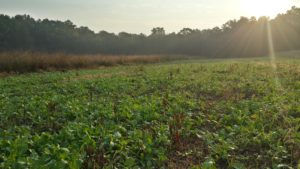
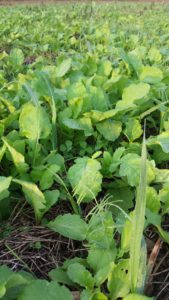 e lots of good green forage during the fall and spring of the year. Oats produce a high value food source in the fall when fall planted but will likely winter kill. Clover and vetch produce lots of protein rich browse for livestock deer and turkey
e lots of good green forage during the fall and spring of the year. Oats produce a high value food source in the fall when fall planted but will likely winter kill. Clover and vetch produce lots of protein rich browse for livestock deer and turkey